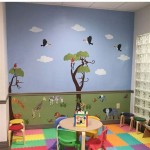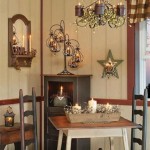How to Decorate an Open Living Room and Kitchen
Open living room and kitchen designs offer a spacious and inviting atmosphere, blurring the lines between these two essential areas. However, decorating such a space requires careful consideration to ensure a cohesive and functional layout. This article will guide you through the process of decorating an open living room and kitchen, exploring key considerations for achieving a harmonious and aesthetically pleasing result.
Define the Focal Points
Identifying the focal points of the open space is crucial for creating a sense of balance and interest. The focal point in the living room could be a fireplace, a statement piece of furniture, or a large window with a captivating view. In the kitchen, the focal point might be a statement backsplash, a large island, or a unique pendant light fixture. Drawing attention to these focal points can create visual interest and define distinct areas within the open space.
To enhance the focal points, consider using contrasting colors or materials, incorporating lighting elements, or strategically placing furniture to guide the eye towards these areas. For example, a dramatic fireplace can be accentuated with a contrasting mantelpiece, while a large island can be highlighted with a statement chandelier. By strategically emphasizing these focal points, you can create a visually appealing and functional layout.
Unify the Space with Color and Materials
While defining distinct areas is essential, it's equally important to create a sense of flow and harmony. Choosing a cohesive color palette and using consistent materials throughout the open space can help achieve this. A neutral color scheme with pops of accent colors can create a timeless and elegant feel, while a bolder color palette can inject personality and vibrancy.
Consider using similar materials for flooring, countertops, and cabinets throughout the space to create a unified look. For instance, using hardwood flooring in both the living room and kitchen can create a sense of continuity and flow. Similarly, choosing similar cabinet finishes for the kitchen and any built-in storage units in the living room can help maintain a cohesive aesthetic.
Maximize Functionality and Flow
An open living room and kitchen should be both stylish and functional. Optimizing the layout to maximize flow and functionality is crucial. Consider the traffic patterns and ensure that there is ample space for both living room activities and kitchen tasks. For instance, placing seating areas away from the kitchen island can ensure smooth movement and prevent congestion.
Consider the placement of appliances and storage solutions to ensure efficient use of space. Strategically placed cabinets, pantries, and drawers can maximize storage options, while incorporating organizational solutions like drawer dividers and spice racks can enhance functionality. Incorporating an island with seating can serve as a multitasking hub, offering a space for both food preparation and casual dining.
Create Visual Separation
While maintaining the open concept, consider creating subtle visual separation between the living room and kitchen areas. This can be achieved through the use of rugs, furniture placement, or contrasting lighting. A large rug in the living room can define the space, while strategically placing furniture can create a clear boundary between the two areas.
Utilizing different lighting types in the living room and kitchen can also add subtle separation. Overhead lights in the kitchen can provide task lighting for food preparation, while softer ambient lighting in the living room can create a cozy atmosphere. Employing lighting in this manner can effectively distinguish between the two areas without creating a sense of isolation.
Incorporating architectural features like a partial wall or a change in ceiling height can also create a sense of visual separation without completely blocking the open concept. These elements can serve as subtle dividers while maintaining the spacious feel of the open space.
Consider the Lighting
Appropriate lighting plays a crucial role in creating the desired ambiance and functionality in an open living room and kitchen. Strategically placed lighting can highlight key features, enhance visual separation, and create a welcoming atmosphere.
Incorporate a mix of overhead lighting, task lighting, and accent lighting. Overhead lighting can provide general illumination for the entire space, while task lighting in the kitchen can illuminate work surfaces and cooking areas. Accent lighting can be used to highlight artwork, architectural features, or furniture pieces. By layering different types of lighting, you can create a multi-dimensional and visually appealing atmosphere.

18 Great Room Ideas Open Floor Plan Decorating Tips
:strip_icc()/open-floor-plan-design-ideas-21-rikki-snyder-4-c0012504a6594446932c2893164d3c95.jpeg?strip=all)
22 Open Floor Plan Decorating Ideas Straight From Designers

Open Concept Kitchen And Living Room Décor Modernize

Before After Open Concept Kitchen And Living Room Decorilla
.jpg?strip=all)
5 Design Savvy Ideas For Open Concept Living Room And Kitchen

17 Open Concept Kitchen Living Room Design Ideas Style Motivation And Plan Small Kitchens

Bring Kitchen Living Room Design Ideas To Life

17 Open Concept Kitchen Living Room Design Ideas Style Motivation Farm House Contemporary Farmhouse

Making The Most Of Your Open Concept Space Brock Built

Stunning Open Concept Living Room Ideas







